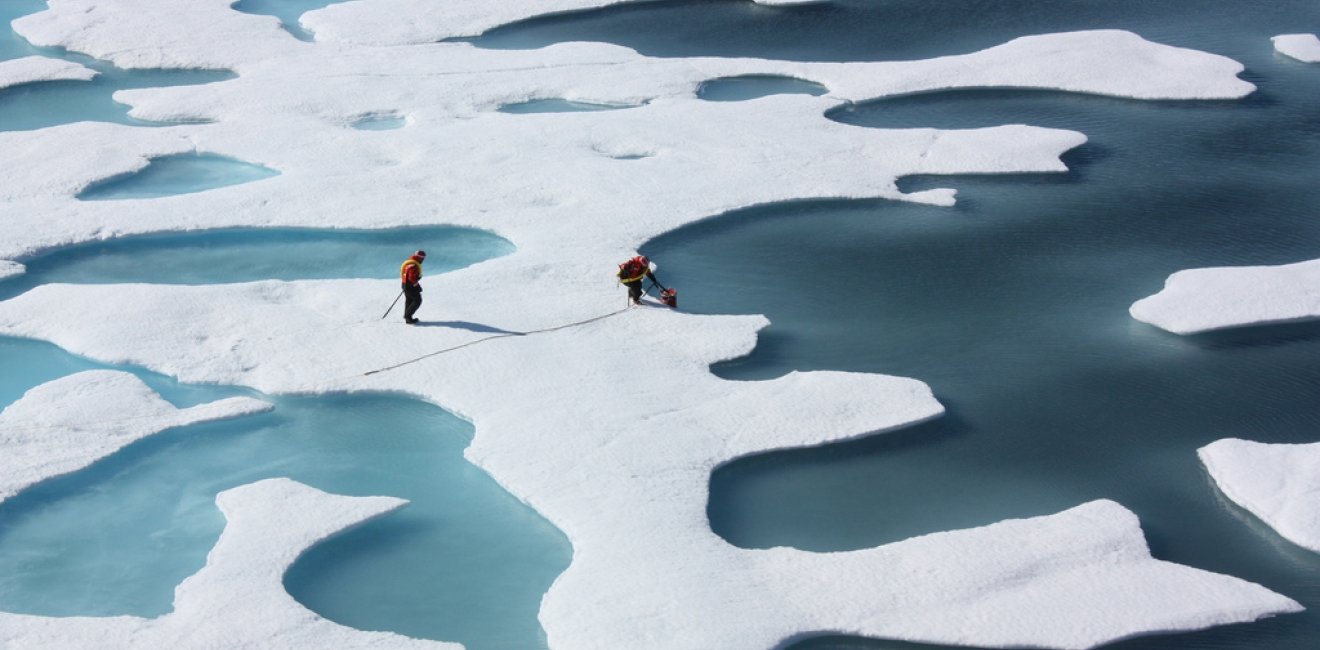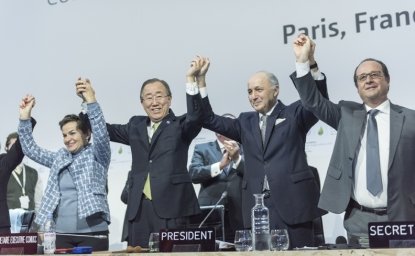The Climate Community Turns to Pragmatism, Mostly
The good news out of Paris is that the world is finally getting serious about reducing greenhouse gas emissions. Here are a few reasons to cheer and one quibble according to Ruth Greenspan Bell.
The good news out of Paris is that the world is finally getting serious about reducing greenhouse gas emissions. Here are a few reasons to cheer and one quibble according to Ruth Greenspan Bell.

The good news out of Paris is that the world is finally getting serious about reducing greenhouse gas emissions. Here are a few reasons to cheer and one quibble.
Concrete, domestically crafted plans
Humanity is now coming down to the wire with the reality of an already rapidly changing climate. Action has been delayed too long and options for resolving in a good way the complex set of issues that make up the climate challenge are narrowing.
Paris marks a turning point. For the first time, countries put on the table their own, domestically crafted plans to start the process of change. These were developed by each country considering its own resources and challenges. It is true that these commitments are messy, constituting an apples and oranges approach in which each country does its own thing. And it is also true that the results of these plans alone will not be sufficient to avoid some very bad outcomes.
But this marks a major difference from the 1997 Kyoto Protocol, which guided actions before Paris. The vision contained there of an emissions trading system that would extend worldwide to ferret out the most attractive emission reductions was largely based on theory and a certain amount of wishful thinking. Theory drove the pipedream that the challenge of changing human use of energy could be achieved through vague general commitments to an international treaty.
Overall, the plans put forward at Paris appear to be rooted in reality and the legitimate challenges each country faces, a direction suggested when limitations of the Kyoto Protocol became clear. Even though the Paris plans may be unsatisfactory in the bigger scheme of things, most of the countries responsible for producing emissions are starting to add pieces to Australian cartoonist Neil Matterson’s famous (2008) 1 million-piece climate change jigsaw puzzle. Soon we should start to see the shape of the picture.
© Education Services Australia Limited and the National Museum of Australia 2009 onwards (except where otherwise indicated).
The Paris agreement rightly references the need to “build [mutual] trust and confidence and to promote effective implementation,” in the context of endorsing an “enhanced transparency framework for action and support with built-in flexibility which takes into account Parties’ different capacities and builds upon collective experience.” This language recognizes the difficulty of the challenge ahead and the reality of building a coalition of countries confident that each is adhering to its commitments and committed to the jointly envisioned future. These kinds of small, cumulative steps are how real progress is made in such monumental tasks, as it was when the countries of the world set out to reduce the threat from weapons of mass destruction.
The U.S. commitment
Another piece of good news is that the United States sent its A team to the negotiations. Secretary of State John Kerry stayed in Paris and played a big role in rounding up support and ironing out differences. When asked about spending time on climate negotiations in view of the crises in Syria, the Islamic State and other international pressures, Secretary Kerry drew a parallel with the urgency of the talks that led recently to a framework for a nuclear deal with Iran:
“It’s similar in the sense that you have to stay at it. If you’re not present, bad things can happen. If you’re not there, there can be a sudden shift in the negotiations and you can lose everything if you’re not ready to head it off at the pass.”
It is believed that President Obama remained engaged behind the scenes, calling world leaders when necessary. There could not be a stronger signal of U.S. priorities.
The agreement implicitly recognizes the unprecedented size of the economic task it poses. Tackling climate change involves changing the very way humans use energy, which we do, consciously or unconsciously, 24 hours a day. Change will require concerted, sustained effort at many levels of human endeavor.
Some use of energy is under our direct control and a lot isn’t. A particular infrastructure, embedded over many decades, is not so easily changed. We must do more than substitute renewables and alternatives to fossil fuels for existing power plants, as hard as that is (even while many countries continue to construct new coal-fired power plants that will have a useful life of many, many decades). Buildings, roads, and other kinds of basic infrastructure must also be transformed. Criticisms that the United States, or any highly developed economy, is not making meaningful changes skip lightly over the magnitude of the challenge.
The 2 degree goal and 1.5 degree ambition
The Paris agreement aims to reduce significantly the risks and impacts of climate change by holding “the increase in the global average temperature to well below 2°C above pre-industrial levels and to pursue efforts to limit the temperature increase to 1.5°C above pre-industrial levels.” In truth, the 2 degree target is a highly disputed figure, possibly too high since scientists really don’t know how far human activity can push a complex system before that system reaches irreversible tipping points and points of no return.
Keeping global warming to any of those standards is an extraordinary task. Getting people to act now, while the results, far in the future, take the form of avoided disasters, belies typical human reward systems. It challenges our evolutionary wiring designed to respond to immediate threats, not those that unfold over a very long time.
Even an exceedingly robust agreement following by intense activity today cannot guarantee the results. Whole economies do not turn on a dime when the issue at stake is as fundamental as energy consumption. Change requires deliberate, consistent effort. The challenges include the carbon loading already in the atmosphere and the reality of committed infrastructure. As David Victor told Climate Wire, “Because we have dawdled on climate policy for 25 years, we don’t have the same options available today that we did in the early 1990s.”
“It is physically possible [but] it would take a major change of society around the world to do it,” says climate scientist Michael MacCracken. “It may not be likely in the political sense, but engineering-wise, if we chose to do it and invest in it, we could.”
The world may well turn, eventually, to some sort of Hail-Mary pass. Legitimate scientists are working on schemes such as pulling carbon dioxide from the atmosphere and securing it in geological media.
With all this in mind, Paris is the launching pad. Pragmatism is the only way forward.
The opinions expressed here are solely those of the author.
Ruth Greenspan Bell is a public policy scholar at the Wilson Center, research associate at the Center for Decision Sciences, Columbia Business School, and visiting scholar at the Environmental Law Institute.
Image Source: Ponds on the Ocean, NASA Goddard Space Flight Center (CC BY 2.0)


The Environmental Change and Security Program (ECSP) explores the connections between environmental change, health, and population dynamics and their links to conflict, human insecurity, and foreign policy. Read more




